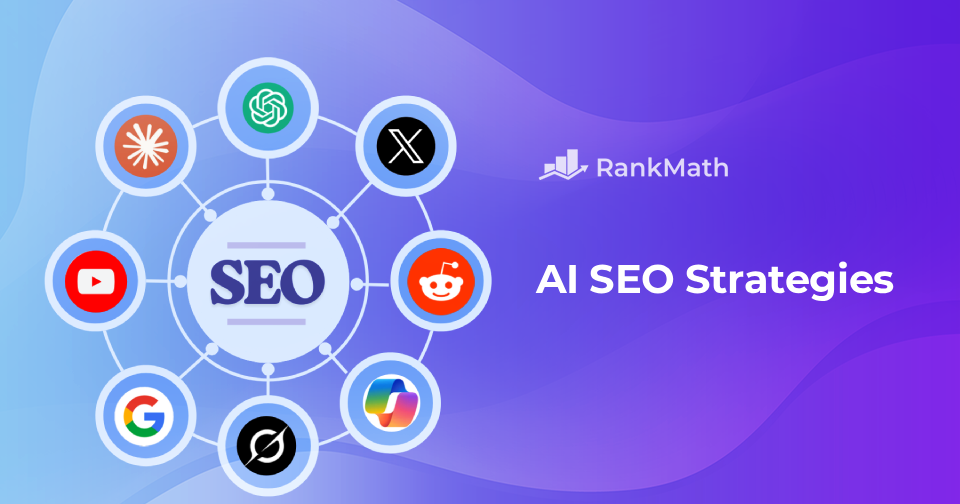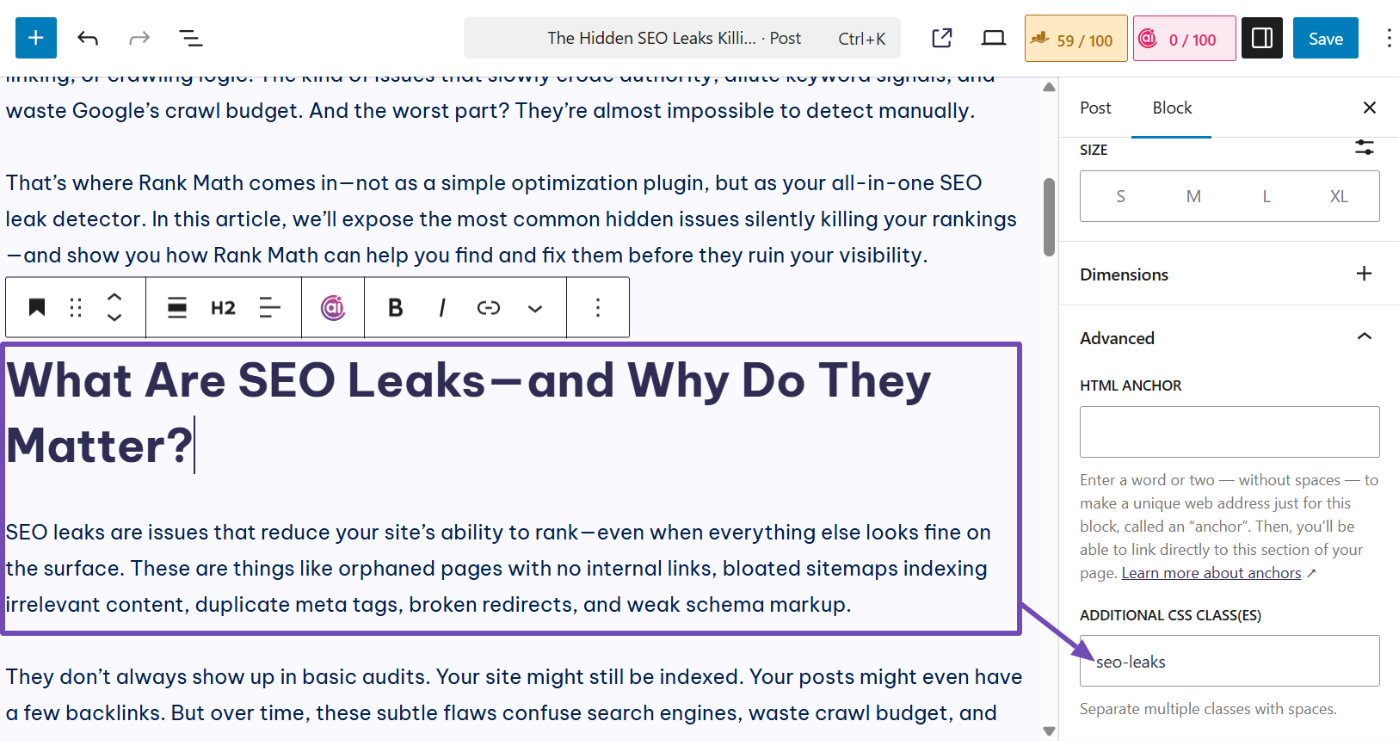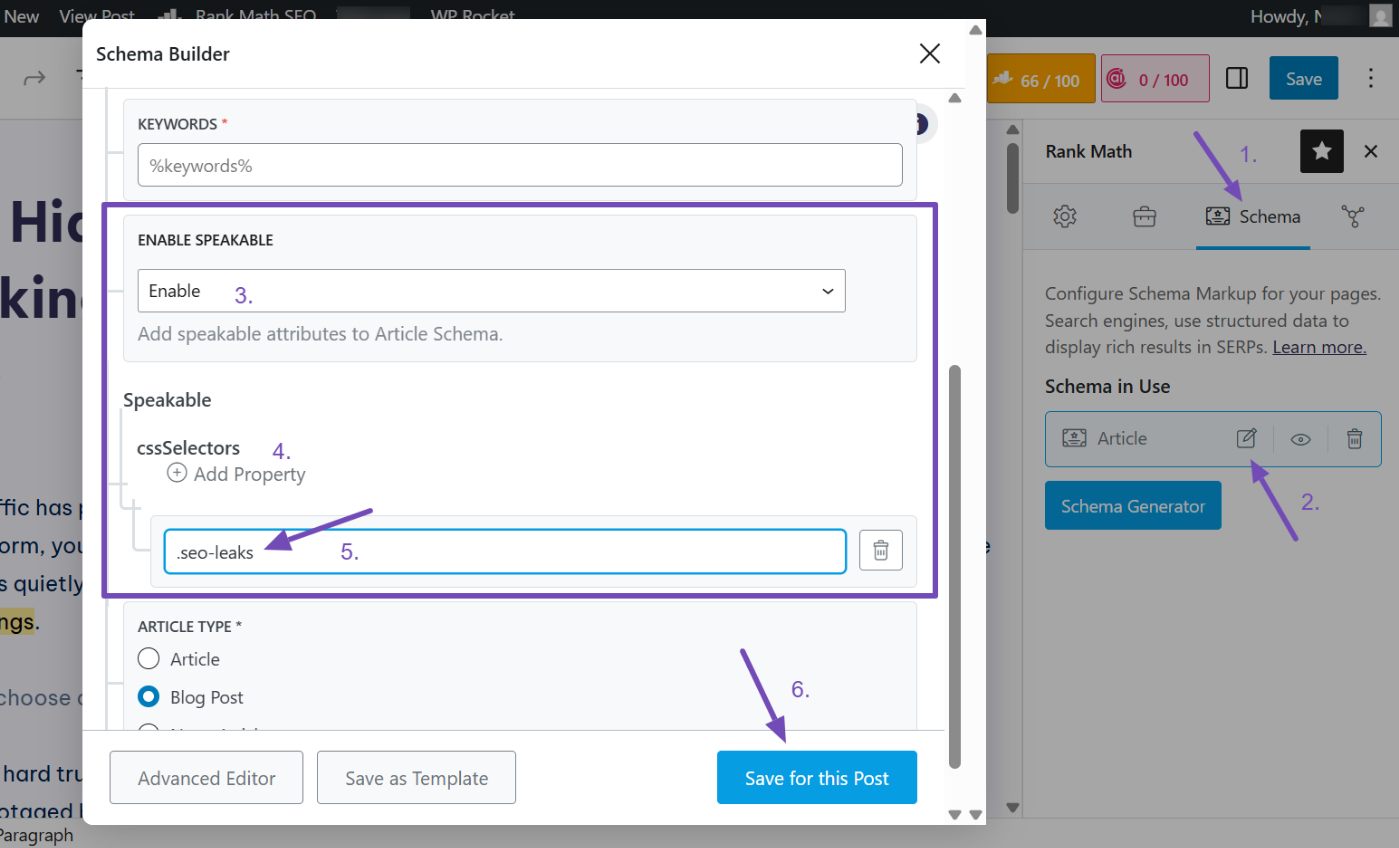Picture this: your site’s ranking higher than ever… but traffic’s dropping. That’s because in 2025, more than half of Google searches now end without a click.
The reason? AI Overviews and instant answers are dominating search results. SimilarWeb says zero-click searches jumped from 56% to nearly 69% after AI Overviews rolled out.
So if you’ve watched impressions climb while clicks disappear, you’re not imagining things. Traditional SEO just isn’t cutting it anymore.
Here’s the deal: you’ve got to show up everywhere your audience looks and give them real value, not the same recycled info AI can spit out in two seconds.
In this guide, we’ll walk you through the top AI SEO strategies for 2025 so AI-generated summaries stop stealing your clicks. Whether it’s GEO, AEO, or ditching your reliance on classic search traffic, you’ll learn how to stay visible even when AI’s trying to answer for you.
Table Of Contents
- Appear Everywhere Your Audience Searches
- Create an llms.txt File for AI Search Visibility
- Focus on High-Intent Keywords for Actionable Content
- Leverage Micro-Influencers for Brand Discovery
- Embrace Hybrid AI-SEO for GEO and AEO
- Optimize for Voice Search
- Use AI Tools — but Add Real Information Gain
- Combine AI with Traditional SEO Essentials
- Get Mentioned on High-Authority Third-Party Sites
Why Traditional SEO Isn’t Enough in the AI Era
A few years ago, securing the #1 spot on Google meant a surge in traffic. Today? That prime position might only bring you a trickle of clicks.
Here’s why: AI-generated answers from ChatGPT, Bing Copilot, Perplexity, X’s Grok, and Google AI Overviews now appear above organic results, serving up information before users ever visit your site.
Instead of browsing multiple sites, people get what they need from one AI-curated box — and those boxes are eating away at click-throughs rates across every niche. In some cases, clicks have dropped by nearly two-thirds in just a year.
This changes the game. Now, E-E-A-T signals (Experience, Expertise, Authoritativeness, Trustworthiness) are now 3x more critical, because AI pulls from the most credible, high-authority sources, not keyword-stuffed posts.
If you don’t adapt, you’ll be left competing for a shrinking slice of organic traffic while AI captures the very audience you’ve worked to attract.
The winners will see SEO as visibility across AI search, traditional search, voice assistants, and even social platforms — not just Google rankings.
Action Tip: Open Google Search Console and look at your top 20 most-visited pages. Compare their CTR before and after AI Overviews. If a page has lost more than 20% of its clicks, AI is likely taking your traffic. Try updating those pages first.
The following 9 AI SEO strategies will show you exactly how to adapt and win.
1 Appear Everywhere Your Audience Searches
People aren’t just Googling anymore. They’re searching on TikTok, Reddit, LinkedIn, Quora, and inside AI tools like ChatGPT and Perplexity. If you’re not showing up where your audience actually hangs out, you’re handing that traffic to competitors.
Neil Patel calls it Search Everywhere Optimization—being visible across every platform your audience uses to start their search. And the shift is real: over 60% of Gen Z now treat TikTok like their main search engine. If you’re not there, you’re leaving clicks, leads, and sales on the table.
But before jumping in, figure out where your audience is actually coming from. Head over to Google Analytics → Acquisition → Traffic acquisition. Then select Session source / medium from the search items. You’ll see exactly where your traffic originates.
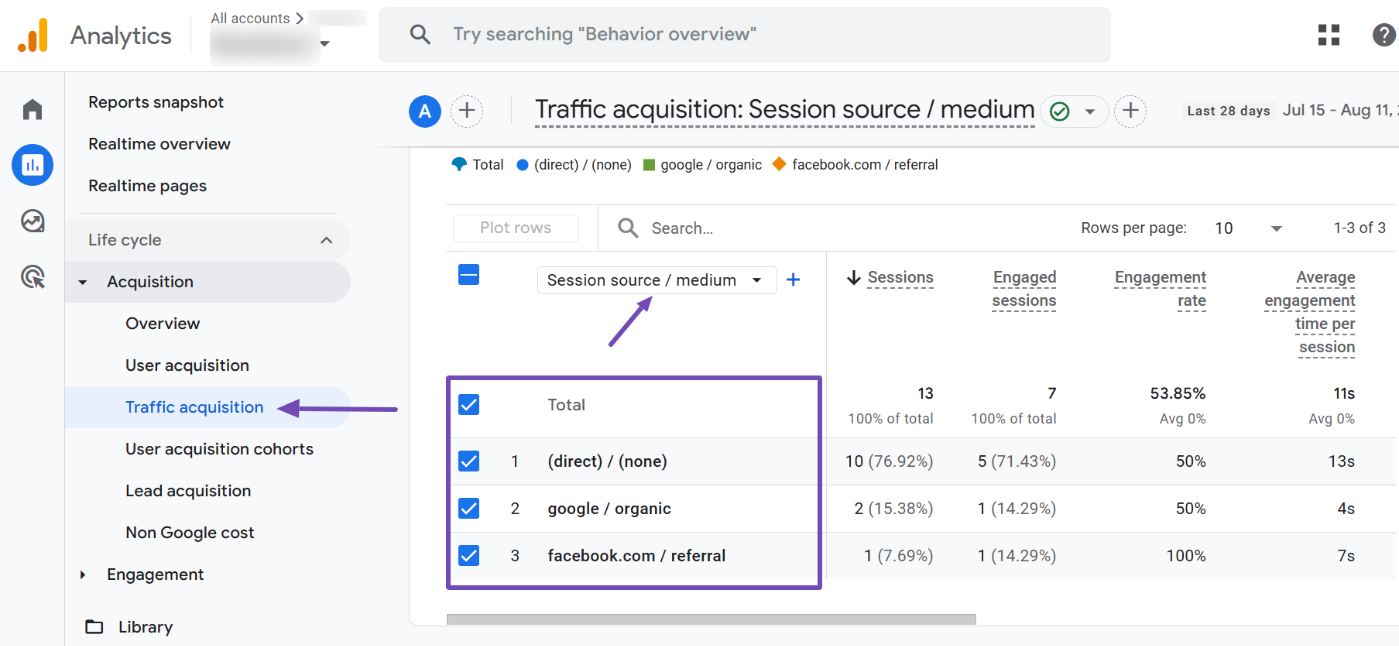
Once you know your hotspots, start building presence across them. If it’s TikTok, use TikTok Keyword Insights to find trending search terms. Just type in the keyword, select the country, industry, objective, keyword type, and duration.
It will provide you with keyword ideas, popularity, and related videos to explore for ideas.
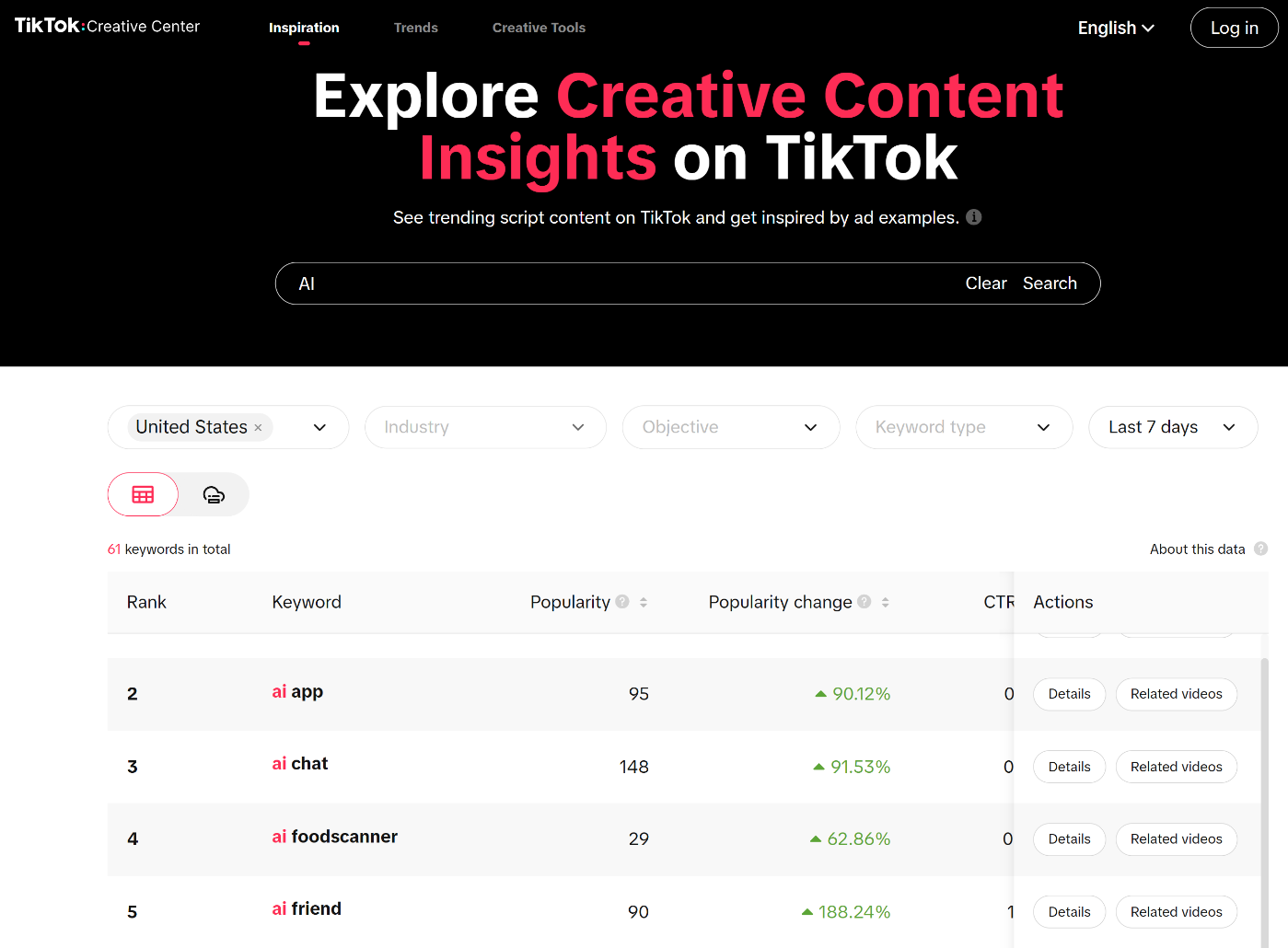
For LinkedIn, Reddit, or Quora, try KeywordTool.io or even ChatGPT to uncover platform-specific search queries.
Here’s the growth hack: take one long-form piece of content (say, a blog post or YouTube video) and repurpose it into multiple formats like short videos, Instagram carousels, LinkedIn posts, Reddit threads, Quora answers, and even AI-friendly snippets.
Don’t underestimate forums either. Google’s now featuring Reddit and Quora threads directly in search results. If you’re there dropping value and answering questions, your brand gets free exposure in two places at once.
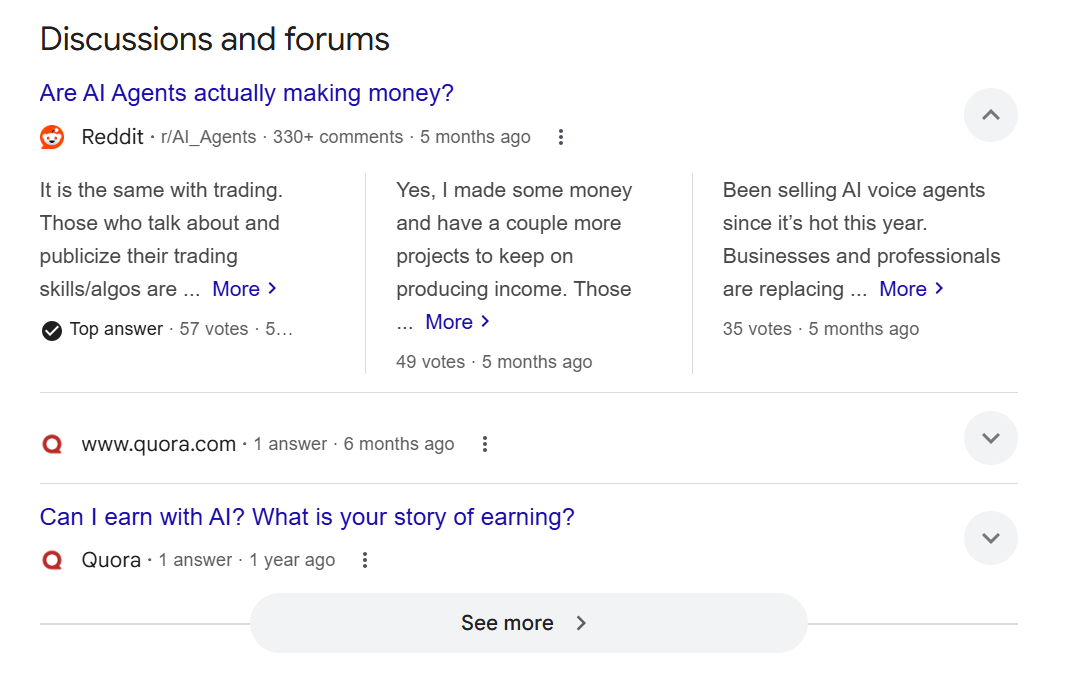
Bottom line? Winning in the AI era means meeting your audience everywhere they search, and giving them fresh, useful content AI can’t easily replicate.
2 Create an llms.txt File for AI Search Visibility
AI tools scan sites to pull updated responses when delivering answers to users. Why make it difficult for them to see your content? You don’t. So include an llms.txt file on your site.
This simple text file tells AI platforms, “Hey AI, here’s what’s important on my site.” You’re making it easier for large language models like ChatGPT, Perplexity, and Claude to access your most important content without crawling your entire domain.
It’s easy to implement. Rank Math does it for you instantly. You don’t need to create the file manually. Just set up Rank Math and enable the LLMS Txt module—boom, it’s automatically added.
Then configure the post types, taxonomies, and custom text you want included.

If you want the full walkthrough with screenshots, we’ve already got a step-by-step tutorial you can follow here.
3 Focus on High-Intent Keywords for Actionable Content
“I don’t want to read all your content, just give me what I want”. That’s exactly what people are saying when they search for answers online.
But user intent depends on your goals. If you want sales, targeting informational keywords won’t make sense. High-intent keywords work better for AI SEO strategies.
Ahrefs found that 99.2% of keywords triggering AI Overviews are informational. But that may just drive traffic with no conversions. Only write informational content if you have breaking news AI hasn’t caught yet, original research, market reports, or link-building assets like statistics pages.
If not, go for high-intent keywords. They drive more revenue and improve customer satisfaction. Target action-driven keywords like:
- Comparisons: “Best AI SEO tools vs traditional SEO tools 2025”
- Best-of lists: “Best AI for SEO optimization for small businesses”
- Buying guides: “Top AI marketing platforms for ecommerce”
Or target content that serves existing customers. Troubleshooting guides, product maximization tips. Here at Rank Math, we answer questions in our KB articles because we find them from support tickets. You can do the same.
This signals to search engines and AI platforms that your content is valuable at the decision-making stage—precisely what you need for effective AI SEO optimization.
4 Leverage Micro-Influencers for Brand Discovery
Micro-influencers, those with small but highly engaged audiences, can get your brand noticed long before people even think to search for you.
If no one knows your brand exists, they won’t search for it. Relying solely on SEO means waiting until demand appears. Micro-influencers shortcut that process by putting you directly in front of interested, targeted audiences.
Take Blueland, a cleaning product brand from Shark Tank. They teamed up with just over 200 micro-influencers over three months, and the results were game-changing: their products shot up Amazon rankings, claimed first-page positions for hundreds of new keywords, and turned a modest campaign budget into a return worth talking about.
Here’s the takeaway: sponsor micro-influencers whenever you can. Even a small investment can go a long way, especially in the early days when organic reach isn’t enough to spark momentum.
Find them by searching niche hashtags on TikTok or Instagram, and approach with a simple, enticing offer: a free product, an affiliate deal, or a small sponsorship.
When people hear about your brand from a trusted voice, you’re not just making a sale; you’re building recognition that AI and search engines can amplify later.
5 Embrace Hybrid AI-SEO for GEO and AEO
AI search engines like Google’s AI Overviews, Bing Copilot, Perplexity, process your content differently than old-school crawlers. They crave clarity, tight structure, and fast, direct answers. But here’s the catch: you still need to win in traditional search results, too.
The sweet spot is Hybrid AI-SEO, optimizing for both AI and classic search at the same time. That means:
- Use descriptive H1–H3 tags so crawlers and AI instantly know what each section covers.
- Answer the question in the first 40–60 words under each heading—no burying the lead.
- Keep sentences short to save AI token usage and make your content skim-friendly.
Do this and you’re hitting GEO (Generative Engine Optimization) and AEO (Answer Engine Optimization) at once.
The result? Search engines and AI models both get your content, quote it, and send you traffic from classic results and AI-generated answers.
6 Optimize for Voice Search
Voice search isn’t a “someday” thing, it’s already massive. In the US alone, 153.5 million people used voice assistants in 2025. That’s 41% of adults literally talking to Alexa, Siri, or ChatGPT every day. And with usage climbing 2.5% year over year, it’s not slowing down.
Here’s the deal: voice queries don’t behave like typed searches. They’re longer, more conversational, and they want one crystal-clear answer on the spot. If you can’t deliver it in one breath, you’re out.
So, keep your answers short, plain, and direct. If someone says, “Alexa, what’s a good CAC for SaaS?” the reply should be, “A healthy CAC is about one-third or less of your LTV.” That’s it—no jargon, no warm-up.
Structure your content with clean, descriptive headings so crawlers and AI assistants can instantly match the question to the right answer.
For extra reach, add Speakable Schema so voice assistants and AI tools know exactly what to read aloud.
- In your post editor, give the heading and its answer paragraph a unique CSS class (use dashes, not spaces).
- Next, go to the Rank Math meta box → Schema tab and click on the Edit icon on the Article Schema.
- Scroll down the Schema Builder, enable the Speakable Schema, then click Add Property and enter the CSS class name you created earlier. Finally, click Save for this Post and save your post.
Voice search optimization is a crucial component of AI SEO strategies, as voice assistants increasingly rely on AI-powered search to deliver answers.
We’ve already crafted a full guide that’ll help you optimize your content for voice searches.
7. Use AI Tools — but Add Real Information Gain
AI can help you produce content faster than ever, but here’s the reality: Google doesn’t care how you make it. They care if it’s worth reading.
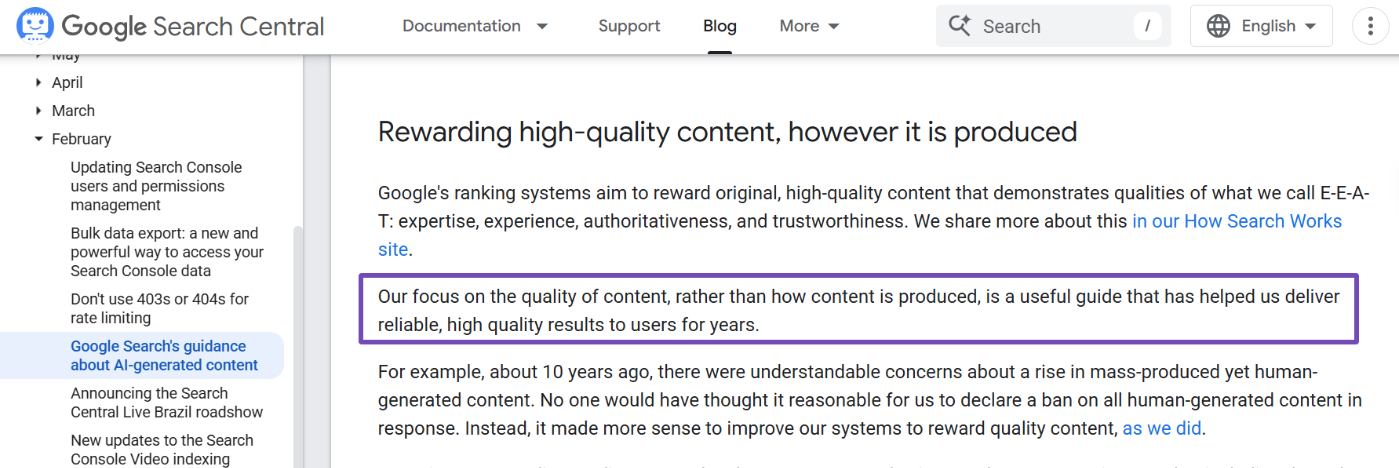
After the June 2025 update, pure AI spam took a beating. Pages lacking fresh insights, data, or unique angles sank quickly.
To avoid this, use AI tools like ChatGPT or Rank Math’s Blog Post Wizard strategically. Use them to get your draft and structure up and running. Don’t let it be the final copy.
When you use the Blog Post Wizard tool, it generates a full blog post for you. But before publishing, layer in real-world experience, expert analysis, credible sources, and transparent authorship.
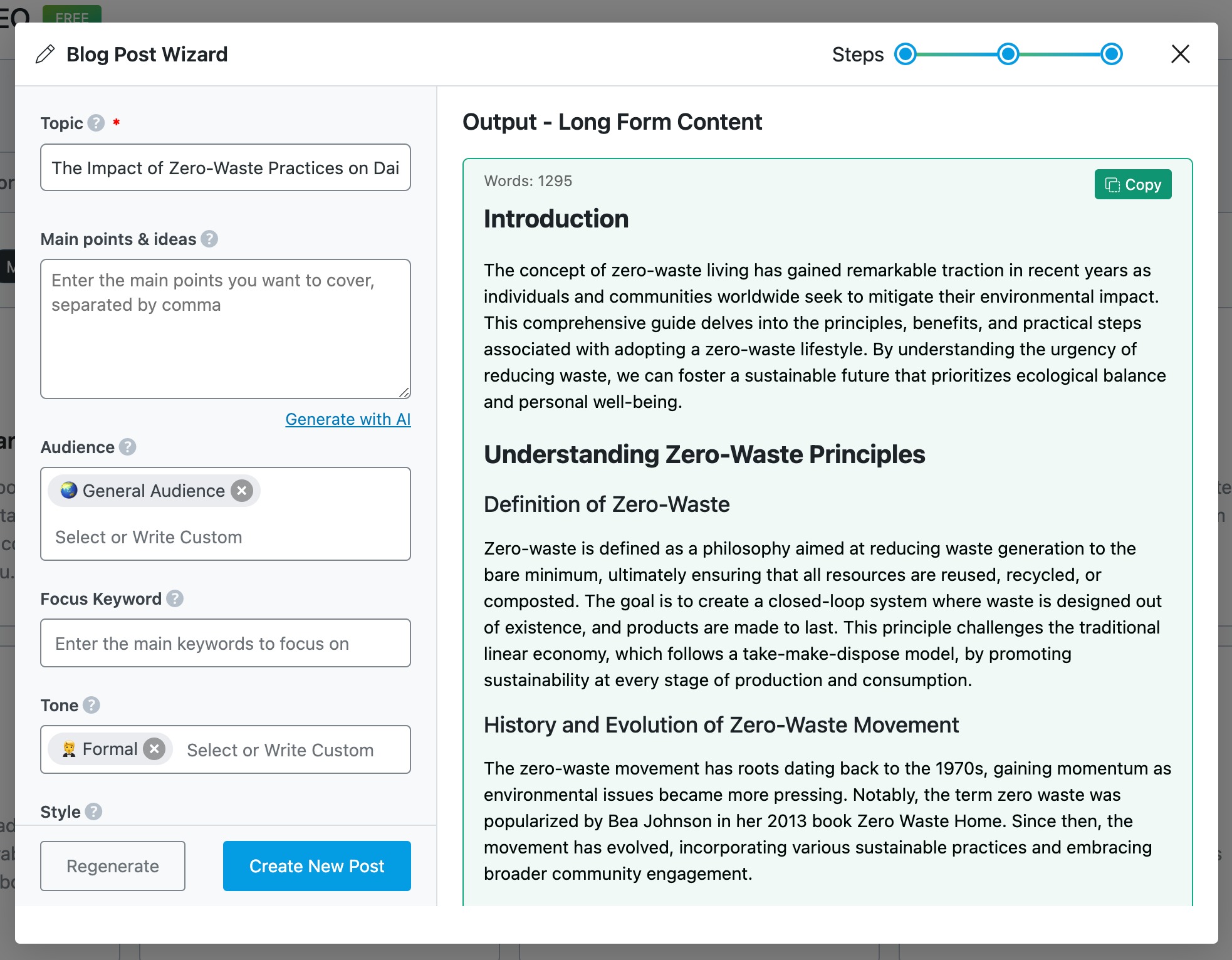
Refer to our detailed guide on how to use our Blog Post Wizard AI tool to write your blog posts.
Add fresh stats, case studies, or examples your competitors don’t have—that’s your information gain. If your article could be generated by anyone with the same prompt, it’s already dead in the water.
Pro tip for AI content creation:
- Review AI drafts like you’re editing a junior writer. Fact-check, rewrite fluff, and add original commentary
- Maintain a swipe file of unique data sources to ensure every post features content Google hasn’t seen before
This approach combines the efficiency of generative AI with the authenticity that both search engines and readers demand.
8 Combine AI with Traditional SEO Essentials
Just because we’re talking about AI SEO doesn’t mean the classic SEO playbook is outdated. If anything, it’s more important than ever.
AI platforms like Claude, ChatGPT, and Perplexity still lean heavily on search engines for their data. That means strong on-page optimization, clean site structure, and credible backlinks still matter.
When creating content, use Rank Math to check your optimization in real time. It will flag areas to improve, and you can either fix them manually or use its Fix with AI feature to speed things up.
Aim for an SEO score of 80+ and add schema markup so both Google and AI crawlers can better understand your content.
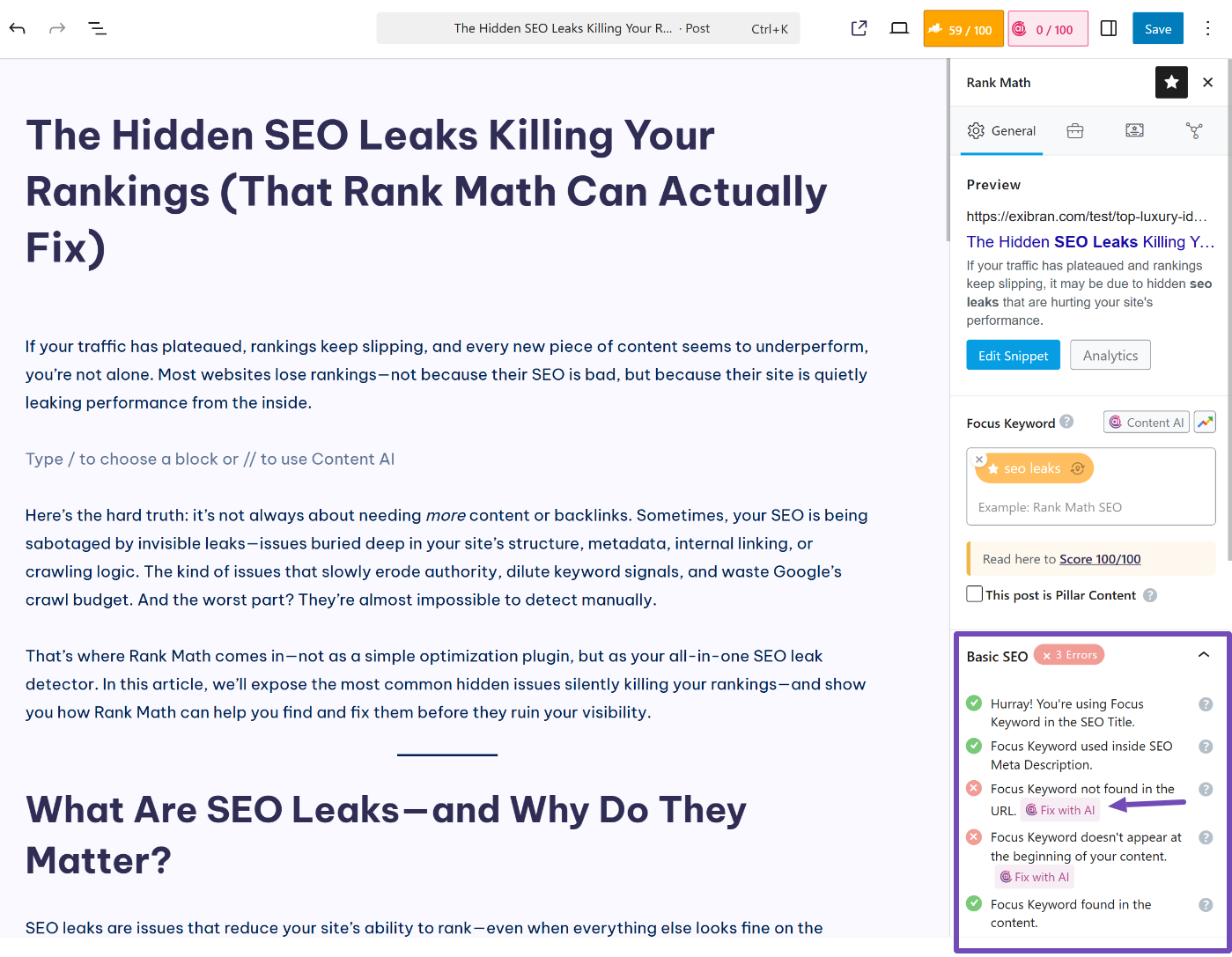
For more details, refer to how to use Rank Math to optimize your content for SEO.
Beyond that, keep building your authority:
- Earn relevant backlinks from trusted sites (skip the spammy link farms)
- Build topical authority with smart internal linking between related articles
These fundamentals make your site far more likely to be cited in AI-generated answers; sometimes boosting your chances by as much as 5–14%.
“AI search isn’t replacing traditional SEO—it’s absorbing it. The stronger your traditional signals, the more AI treats your site as a trusted source.”
9 Get Mentioned on High-Authority Third-Party Sites
If AI platforms pull from the top Google results, one of the fastest shortcuts to AI visibility is appearing in those results — even if they’re not on your own site.
Start by searching your target keywords (e.g., best AI SEO tools, top AI marketing platforms) and note which sites consistently rank on page one.
Then:
- Reach out to authors, editors, or site owners with a short, value-driven pitch explaining why your brand, tool, or content deserves a spot in their listicle or resource page
- Send a well-written blurb, image, and link so it’s easy for them to add you without extra work.
Sometimes you’ve got to move smart and make it happen yourself. Don’t sit around waiting for someone else to give you a spot; jump in.
Leave genuine, helpful comments on high-traffic content like YouTube videos, LinkedIn posts, or popular industry infographics. Say something that adds value and makes people curious enough to check out your resource. From there, you can start pulling that audience into your own space.
“Sometimes the smartest way into the top results is through the front door, but other times, it’s through the living room of the people already inside.”
Conclusion
The future of SEO isn’t just about ranking on Google; it’s about being visible wherever your audience searches, scrolls, or asks questions.
Whether it’s AI-driven summaries, voice search, or citations from authority sites, the mission stays the same: meet your audience at every touchpoint before someone else does.
The brands that blend traditional SEO fundamentals with AI-era tactics won’t just survive this shift, they’ll dominate it. They’ll be the source everyone else quotes.
So stop chasing algorithms. Become the reference.
Here’s exactly what you need to do: figure out where your audience is coming from and create content to target them there.
Apply any of the AI SEO strategies we’ve covered, and let us know which one works best for you by Tweeting @rankmathseo.
